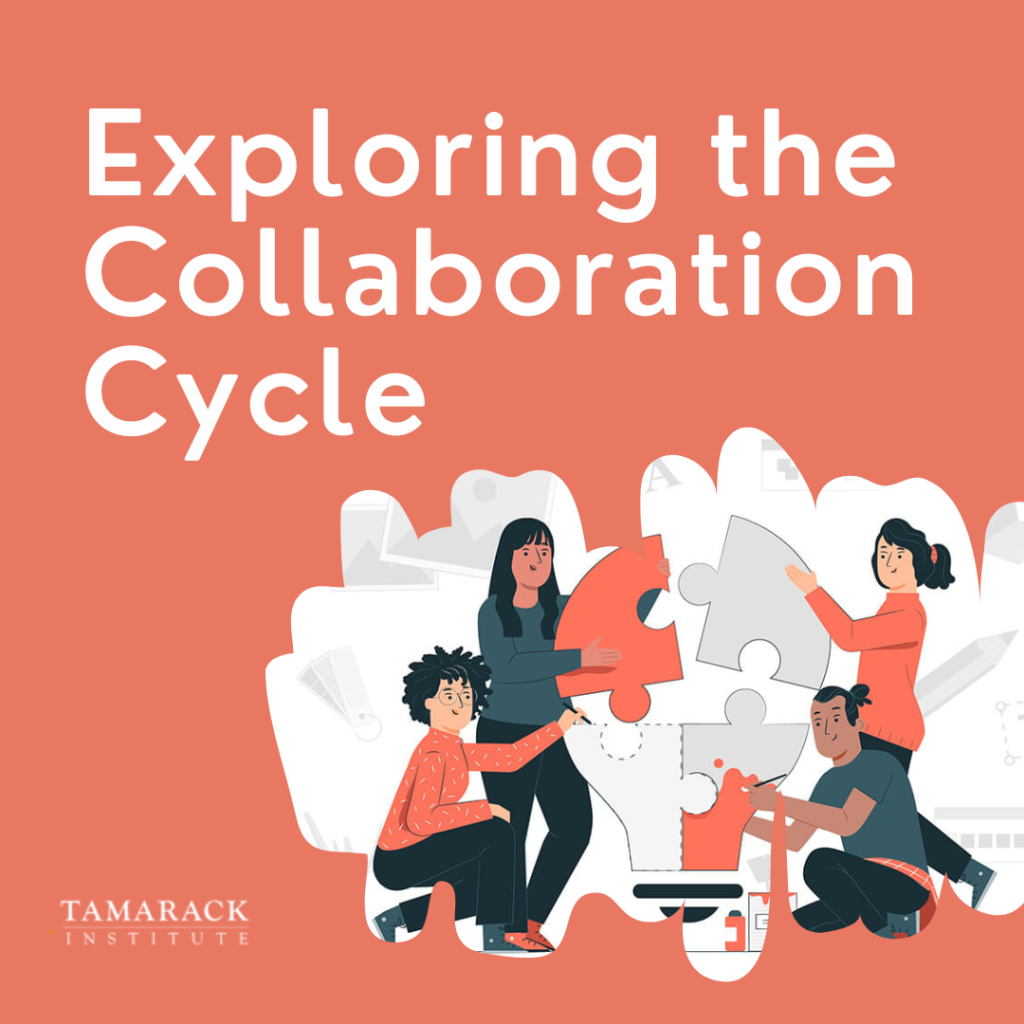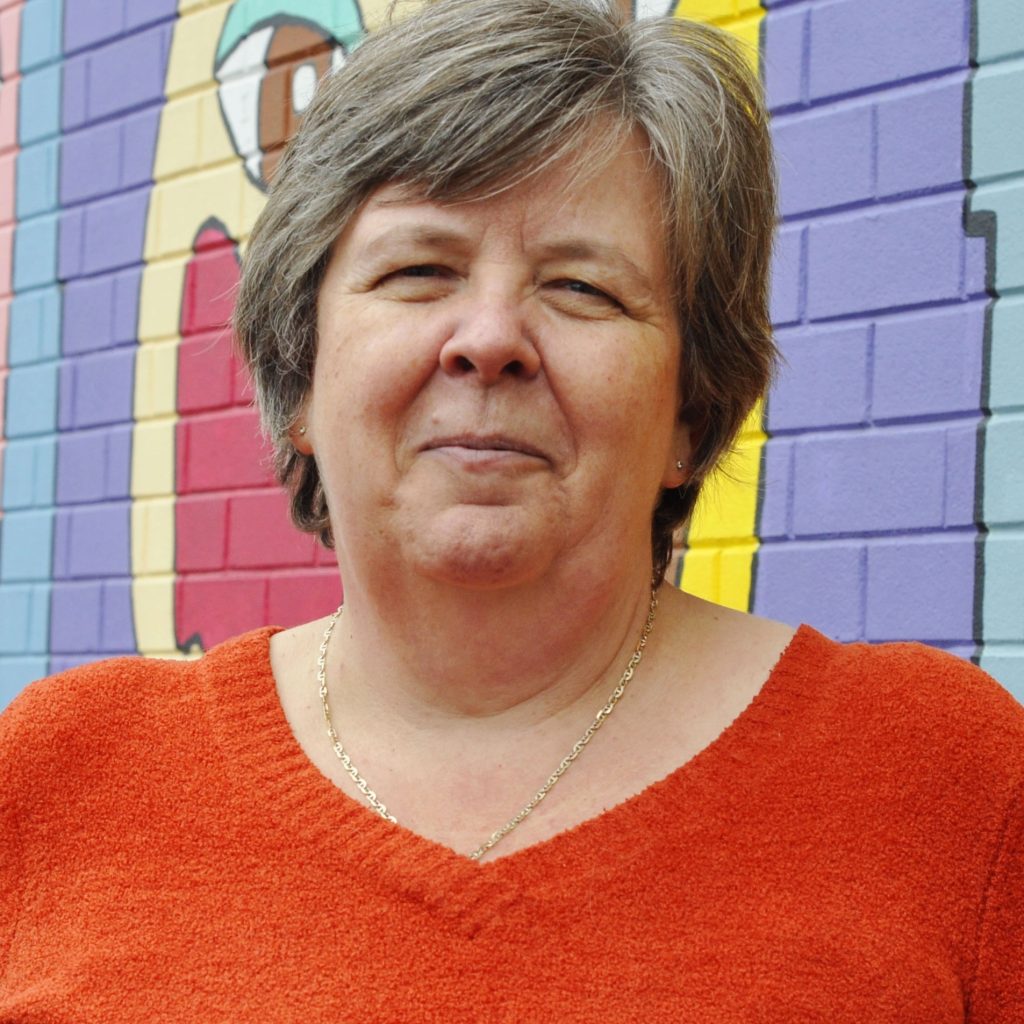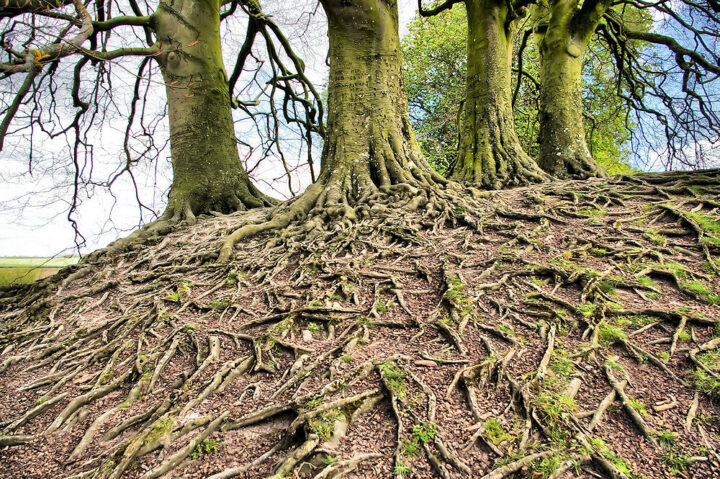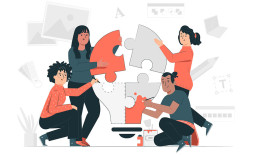MEASURING LOVE in the JOURNEY for JUSTICE
Below is the preface to this week's featured resource: Measuring Love in the Journey for Justice. Find the link to download this Brown paper at the end of this post.
MEASURING LOVE
Preface: A Sovereign Perspective
As this is a Brown—not white—Paper, we want to give some perspectives before you dig in. In a sovereign, self-determining perspective, we see Two Spirit people as sacred gifts. Children are treasured. Elders are respected and privileged. Womyn are beloved and respected and have power and voice. Fathers, sons, and boys are lifted up as the warriors, believers, and loyal friends that they are. Mothers, daughters, and girls are as valued as life itself, seen and treated as blessings. And all relations are sacred.
To be sovereign and free, our people need policies made of love, forgiveness, and connections.
As oppressed, exploited people of color in this work of social and racial justice, we have seen — and are seeing—children separated from their caregivers, caged in concentration camps. We are living in another era of the systemic denial of democratic civil rights. To be sovereign and free, our people need policies made of love, forgiveness, and connections. Our communities deserve health and educational equity; land and housing justice; economic independence; living wages (as in universal minimum income). Our people want restorative justice practices to replace punishment and lockup. Our communities want community organizing and advocacy, block by block. Our people need community controlled governance and accountability systems. We want civic leadership everywhere, as the right to vote goes with the rights to drive, assemble, drink, and travel.
This Brown Paper flips the script of what is acceptable as a “Paper” on its head. It is not a “formal,” research-based, finished product of the traditional type. It comes from the heart and is meant to be used—like love. It is meant to spark dialogue and provoke.
In it, we are asking ourselves, “Are we loving bravely enough?”
And “How much am I loving?” “What else I can do to be in community from a place of love?” and “How am I wielding power fused with love?”
These are the essential questions posed in our brown paper. We are excited to bring this out into the world to provoke, connect, and build with you.
We have so much to love. We love YOU because we know if you’re reading this paper, you know what it’s like to be powerless and not feel loved—and are working on bringing about more justice in the world.
We release our intentions into the universe. We want to know what your reactions are. We thank you for honoring us by your comments and discussion.
Spread your love. And, we know we are rising as one.

Download Measuring Love in the Journey for Justice HERE

Shiree Teng has worked in the social sector for 40+ years as a social and racial justice champion – as a front line organizer, network facilitator, capacity builder, grantmaker, and evaluator and learning partner. Shiree brings to her work a lifelong commitment to social change and a belief in the potential of groups of people coming together to create powerful solutions to entrenched social issues.
*After the Measuring Love Brown paper was released, Shiree's co-author was arrested on allegations of child molestation. She addresses this in a "Letter to Beloveds" - an excerpt from her next collaborative paper, Healing Love into Balance. (which will be highlighted at NW in the coming weeks.

Network Weaver is dedicated to offering free content to all – in support of equity, justice and transformation for all.
We appreciate your support!
donate in the box above or click here
EXPLORING THE COLLABORATION CYCLE
Below is an excerpt from the full article which can be downloaded here or at the bottom of this post. This article a part of the Tamarack Institutes Collaborative Governance and Leadership series.
The Collaborative Context

Many enter into collaboration thinking that the shared work is a linear and flat process from start to end. One of the favourite images describing collaboration that is often included in Tamarack power points is this image of plan versus reality. It captures the reality of collaboration including the twists and turns that collaborative efforts face as they move from start to completion. It can include obstructions like boulders and choppy waters and other challenges which are found obstructing the path along the way. This image always receives a small chuckle because individuals in the room have experienced these challenges.
However, the reality image still conveys a relatively linear, if upward, and challenging experience. This image is relevant for collaborative efforts seeking to achieve a result that is more defined such as the exchange of ideas, or development of a new program or service.
For more significant community change efforts, a different approach was introduced to Tamarack by Brenda Zimmerman of The Plexus Institute. Zimmerman described community change as a more cyclical process mirroring phases of development found in ecology.
The ecocycle concept is used in biology and depicted as an infinity loop. In this case, the S curve of the business school life cycle model is complemented by a reverse S curve. It is the reverse S curve, shown below with the dotted line, that represents the death and conception of living systems. In our depiction of the model, we call these stages creative destruction and renewal. The importance of the infinity loop is that it shows there is no beginning or end. The stages are all connected to each other. Hence renewal and destruction are part of an ongoing process.

Being an infinity cycle, there is no obvious start or end to the cycle. Let us begin our examination of the stages at the beginning of the traditional S curve. We will begin each phase by using the biological example of a forest and then look at the analogous phase in human organizations.(i)
The four phases of the ecocycle, as described by Zimmerman and the Plexus Institute follow the traditional (and linear) growth curve from birth to maturity. However, it also considers a renewal loop. The renewal loop includes a creative destruction phase and a renewal phase.

The image from the Plexus Institute website displays and describes the ecological cycle of a forest which starts with a variety of different plant growth (birth) which leads to increasing density as the forest grows to maturity. At maturity, the forest becomes increasingly vulnerable because of the density of growth. It can experience rot through invasive moths or pests or be ruined because of a forest fire. The creative destruction phase creates the space for renewal and regrowth. It is often the results of decay that enable the regrowth or renewal to seed.
Using the Ecocycle to Inform Our Practice
The ecocycle has been adapted by many organizations over the last several years to describe a better way of understanding community change and collaboration cycles. Tamarack has used the ecocycle to inform our practice of supporting communities tackling complex issues like ending poverty, building youth futures, deepening community, and navigating climate transitions. Tamarack, influenced in our early years by Brenda Zimmerman, recognizes that communities are dynamic and responsive. Even as collaborative tables begin to intervene in community change efforts, the community begins to respond, grow, and change. The ecocycle approach can be useful to collaborative tables to help understand and navigate dynamic change recognizing that change is not linear but rather exists in phases and cycles.
From Ecocycle to Collaboration Cycle
There have been many articles written about the Ecocycle and adaptations to this approach. One useful adaptation of the ecocycle was developed by Chris Thompson, Collaboration – A Handbook from the Fund for our Economic Future. (ii) In this handbook, Thompson adapts the ecocycle to a collaboration cycle approach. Thompson builds of the Plexus Institute ecocycle framework and Tamarack’s approach to adapting the ecocycle to community change efforts. Thompson uses the phases language of development, maturity, creative destruction, and exploration.
Thompson describes three elements which are vital to impactful collaboration: capacity, process, and leadership. The collaboration cycle is useful to focus on the process of collaboration.
This cycle serves as a roadmap for the diverse players who are along for the collaboration journey. It is invaluable to new participants joining an existing collaboration, as it can be used to help them understand where the partners are on the journey. Advocates of collaborations, particularly those performing the key collaboration functions, also should take the time to help each partner assess where they are on the cycle. Not every partner travels through the cycle at the same pace. (Thompson. Page 29) Thompson provides useful steps in each of the phases such as developing new thinking, analyzing data, and expanding possibilities in the exploration phase

In the development phase, the steps include choosing strategies, developing approaches, and adapting as the collaboration moves forward. The maturity phase includes implementation, evaluation and in some cases conserving to build on successful results. The creative destruction phase is initiated by declining outcomes, crisis, or breakdown and reconnecting.

Access the full article HERE

Liz Weaver is the Co-CEO of Tamarack Institute and leading the Tamarack Learning Centre. The Tamarack Learning Centre advances community change efforts by focusing on five strategic areas including collective impact, collaborative leadership, community engagement, community innovation and evaluating community impact. Liz is well-known for her thought leadership on collective impact and is the author of several popular and academic papers on the topic. She is a co-catalyst partner with the Collective Impact Forum.
Liz is passionate about the power and potential of communities getting to impact on complex issues. Prior to her current role at Tamarack, Liz led the Vibrant Communities Canada team assisting place-based collaborative tables to move their work from idea to impact.
featured image found here

Network Weaver is dedicated to offering free content to all – in support of equity, justice and transformation for all.
We appreciate your support!
“Entangled” Social Change: From Inter-action to “Intra-Action”
“What is at stake with quantum theory is the very nature of reality. Should reality be understood as something completely impervious to our interventions, or should it be viewed as something responsive to the very existence of human beings?”
Christopher Fuchs (physicist)
A mark of a good book for me is one that challenges my thinking, moves my heart, and also resonates in my body. That has been the case while reading Karen O’Brien’s You Matter More Than You Think: Quantum Social Science for a Thriving World. I want to give a big “thank you” and shout out to Fabian Pfortmüller who made this recommendation to me during a rich conversation a few weeks ago.
O’Brien’s book makes the case for bringing a quantum physics lens to the social sciences and to thinking about social change, even as she acknowledges the doubters and detractors who see this as an inappropriate move. Indeed, in posting about the book on LinkedIn recently, I was a little surprised to see a couple of comments attacking the idea of importing quantum considerations into the human realm. In anticipation of this, O’Brien notes that while quantum and classical physics, as well as the “hard” and social sciences, may have different applications, they are not totally separate from each other. Furthermore she writes:
“… given the nature of global crises, maybe this actually is an appropriate time to consider how meanings, metaphors and methods informed by quantum physics can inspire social change, and in particular our responses to climate change.”
So I have been doing what she invites – playing with these different ideas and concepts from the quantum realm and seeing what they stimulate. One I want to lift up here is the notion of subjectivity versus objectivity, and specifically that we are always participants in the world, never simply “detached observers.” This is not simply meant in an emotional sense, but that our very act of observing is actually an embodied intervention and can change what we see and also how we see the world. This “entanglement” (meant more metaphorically here, rather than in the formal scientific sense) asks us to consider how we are already connected, or part of a larger whole.
O’Brien spends some time exploring beliefs as being central to both what is possible and what is actually realized in our lives and world. If we believe we are completely separate from one another, for example. what do we and don’t we consider possible or worth while? If we believe we are more tied or woven, then what might we be inclined to do? The work of Karen Barad is referenced in this respect, pointing out the difference between talking/thinking about “inter-actions” of separate entities versus “intra-actions” among entangled elements within a larger whole. This is not just about a difference in language, but a difference in perceived and acted upon futures.

What comes to mind is a mantra of sorts that Valarie Kaur puts forward in her justice work focused on addressing the dynamics of othering and oppression, as well as in her book See No Stranger: A Memoir and Manifesto of Revolutionary Love –
“You are a part of me I do not yet know.”
Similar to this spirit, john a. powell offers the following in Racing to Justice: Transforming Our Conceptions of Self and Other to Build an Inclusive Society:
“There is a need for an alternative vision, a beloved community where being connected to the other is seen as the foundation of a healthy self, not its destruction, and where the racial other is seen not as the infinite other, but rather as the other that is always and already a part of us.”
I am also reminded of the peace-building work of John Paul Lederach, and this from his book The Moral Imagination: The Art and Soul of Building Peace:
“Time and again, where in small or larger ways the shackles of violence are broken, we find a singular tap root that gives life to the moral imagination: the capacity of individuals and communities to imagine themselves in a web of relationship even with their enemies.”
If we treat the so-called “other” (whether human, other animals, plants … ) as apart from us, or as in some sense fundamentally threatening (“the enemy”), then where does that lead? The point here is that reality is not just “reality out there,” it is also what we make of it. We have a say. We matter. What we believe matters. What we do matters. Embracing “a bigger WE” matters. We can “bring forth worlds,” (to quote Humberto Maturana and Francisco Varela’s Santiago Theory of Cognition) at least to a certain extent. And whether this is about imagining or re-membering, acting “as if” we are joined in something larger can seemingly create tangible results, while also acknowledging that dynamics of power and privilege are important to consider in terms of who may be inclined to make first gestures and how these will be received.
“Between me and not-me there is surely a line, a clear distinction, or so it seems. But, now that I look, where is that line?
This fresh apple, still cold and crisp from the morning dew, is not-me only until I eat it. When I eat, I eat the soil that nourished the apple. When I drink, the waters of the earth become me. With every breath I take in I draw in not-me and make it me. With every breath out I exhale me into not-me.
If the air and the waters and the soils are poisoned, I am poisoned. Only if I believe the fiction of the lines more than the truth of the lineless planet, will I poison the earth, which is myself.”
– Donella Meadows, from “Lines in the Mind, Not in the World”
* * * * *
A few years ago I was diagnosed with a benign tumor on my left acoustic and balance nerve (an acoustic neuroma). As the tumor continued to grow, albeit slowly, I made the decision to have radiation treatment two years ago (six months into our new COVID reality). What was presented as a fairly straight-forward outpatient procedure turned into quite an ordeal as I had a strong reaction to the treatment. What followed was dizziness, terrible tinnitus, poor sleep, muscular pain, headaches and occasional “nerve storms” in other parts of my body. After a few months of extreme discomfort I went to see a very adept acupressurist and holistic healer who made the observation that I seemed to be trying to separate myself from that part of my body, tensing against it, rejecting it, and the result was further exacerbation. With her help, over several months, I gradually got reacquainted with that sensitive area (really getting to know it for the first time), and through slow and steady integrative body work, began to relax and reclaim that part of me in a way that has brought greater ease to my overall system and life.

The very energizing thing about that work with this healer is that it has helped not simply to address discomfort in one area of my body, it has positively impacted other parts that I did not even realize were misaligned and/or listless until this crisis occurred. I take it as ontological truth that I am all of my body (though not simply my body), yet for many years (and especially recently) I had not been acting like that (consciously and unconsciously), with real health-related ramifications. Extend this metaphor (separate –> connected, inter-action –> intra-action) to other “bodies” of different sizes. scales and dimensions, and where might that lead?
What excites me here is acknowledging the entanglements that we do not yet know, or cannot possibly hold in our minds alone given the immensity of the world. This is where “thinking and acting in a networked way,” with some faith and conviction, comes into play for me, along with an orientation towards equity. In particular, I think of the encouragement offered in these words from the late long-time community organizer and political educator Grace Lee Boggs:
“We never know how our small activities will affect others through the invisible fabric of our connectedness. In this exquisitely connected world, it’s never a question of ‘critical mass.’ It’s always about critical connections.”
What critical connections and small moves might we make in this intricate, [vast/intimate] and mysterious world that could yield big and needed changes in our communities and lives?

About the Author:

Much of Curtis Ogden's work with IISC entails consulting with multi-stakeholder networks to strengthen and transform food public health, education, and economic development systems at local, state, regional, and national levels. He has worked with networks to launch and evolve through various stages of development.
originally published at Interaction Institute for Social Change
featured image by Kevin Dooley, shared under provisions of Creative Commons Attribution license 2.0.

Network Weaver is dedicated to offering free content to all – in support of equity, justice and transformation for all.
We appreciate your support!


